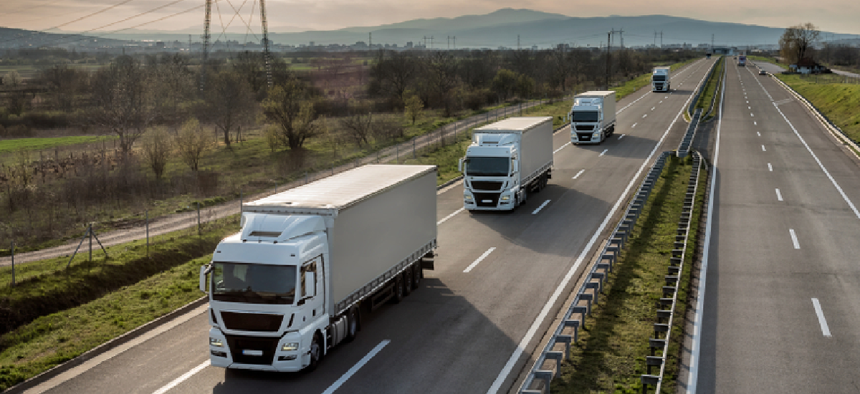USPS tests autonomous long-haul trucks


Connecting state and local government leaders
In a two-week pilot, customized Peterbilt vehicles will be hauling mail on a 1,000 mile trip between Phoenix and Dallas.
The U.S. Postal Service is testing self-driving trucks for transporting intercity mail. In a two-week pilot, autonomous trucking firm TuSimple will supply customized Peterbilt vehicles to haul semi trailers on the 1,000 mile trip between Phoenix and Dallas.
Autonomous trucks are attractive to fleet operators like USPS that are looking to speed delivery, reduce fuel costs, increase safety and improve fleet utilization rate through longer hours of operation. The autonomous vehicles will also help USPS and other transport firms deal with a growing shortage of long-haul drivers, which could reach 175,000 by 2024, according to the American Trucking Association.
Five round trips are planned for this pilot, which runs through Arizona, New Mexico and Texas and includes overnight driving. Certified safety drivers and engineers will ride along in the trucks to monitor vehicle performance and ensure safety. The trucks will switch to autonomous mode once they're on the highway.
“Performing for the USPS on this pilot in this particular commercial corridor gives us specific use cases to help us validate our system, and expedite the technological development and commercialization progress,” TuSimple Founder, President and CTO Xiaodi Hou said.
The autonomous trucks use perception and localization tools -- high-definition cameras, GPS, radar and lidar sensors, inertial measurement units and audio sensors -- for long-distance sensing at high speeds under a variety of conditions. The sensors, optimized for use on class 8 tractor trailers, give the trucks a 1,000 meter range -- enough time and space for them to slow down in an emergency, according to the TuSimple safety report.
Deep learning algorithms use the sensor data to detect and track objects -- drivers and pedestrians and the surrounding infrastructure -- in real time and make "pixel-level interpretations" based on terrain and real-time road conditions to safely guide vehicles along their routes, the report said. The sensor data is also used to train the self-driving system to classify objects it encounters and predict their future actions so it can choose and execute a safe route.
To protect the system from cyberattacks, TuSimple designed protocols to isolate and protect all onboard systems that communicate with the outside world. Additionally, the self-driving system monitors itself for malfunctions and cybersecurity attacks.
"This pilot is just one of many ways the Postal Service is innovating and investing in its future," USPS officials said in a statement. "We are conducting research and testing as part of our efforts to operate a future class of vehicles which will incorporate new technology to accommodate a diverse mail mix, enhance safety, improve service, reduce emissions, and produce operational savings."
This is just the latest foray by USPS into autonomous mail delivery.
In February 2019, USPS issued a request for information for autonomous vehicles to help local mail carriers. It said it was looking for technologies that will allow a mail truck to autonomously drive along its route while its operator organizes the mail.
A 2017 inspector general's report on incorporating AV into the fleet identified use cases for autonomous vehicles in both long-haul deliveries: fully autonomous trucks, which drive either the whole route or the highway portion of the route without a driver, and platooning, in which two or more trucks that use sensors to control their following distance and steering form single-file “platoons” on the highway.
The platoon idea has been more fully explored by the military as it aims to reduce risk to soldiers who deliver supplies in combat zones and has been advancing faster than expected, after Army Secretary Mark Esper asked last year to push the timetable forward, according to National Defense magazine.
Using what the Army calls leader-follower technology, a manned lead vehicle heads a line of unmanned follower vehicles that are remotely operated by a single operator in the lead vehicle. The technology was recently demonstrated at Fort Bliss in Texas with 10 vehicles. Sixty more test trucks are expected to be tested at two other military bases in the coming year, according to Axios.





